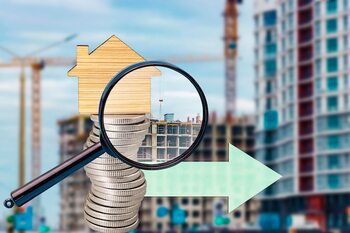The relevance of land use in real estate valuation

Location is one of the most determining factors in real estate valuation and, therefore, in the appreciation of properties. Understanding how land use influences the value of a property is essential for those looking to invest wisely. From commercial to residential areas, each type of use impacts not only the current price but also the future potential. In this article, we will explore the relevance of land use and its direct impact on property appreciation, helping you make informed decisions.
1. Definition of land use and its classification
Land use refers to the way a particular piece of land is utilized and is intrinsically related to the function it serves within a community or urban environment. This definition encompasses residential and commercial zones as well as industrial and recreational areas, each with its own regulations and specific characteristics. The classification of land use is essential for understanding how cities are planned and how these decisions affect both urban development and property values. For example, an area designated for commercial use generally has a higher value due to its potential to generate income, compared to areas that are exclusively residential or agricultural.
Land use classification can be divided into several main categories: residential, commercial, industrial, and agricultural, among others. Each type has its building codes, allowed density, and limitations that influence real estate development. Furthermore, this classification not only determines which activities are permitted in a specific area but also sets expectations regarding the surrounding infrastructure and available services. Therefore, understanding this hierarchy is fundamental for investors, as the type of use assigned to a property can considerably influence its current and future valuation. Likewise, changes in regulations or social trends can significantly transform a specific area, directly affecting its long-term appreciation.
2. How land use affects the real estate market
Land use is a key factor that determines the dynamics of the real estate market. Each type of zoning—residential, commercial, industrial, or mixed—establishes a framework that delineates how a property can be used. For example, land designated for commercial use often has a higher value due to the constant demand for business spaces, which increases its appreciation. In contrast, purely residential areas may experience fluctuations in their valuation depending on factors such as urban development and surrounding infrastructure. Thus, land use not only influences the current price of a property but also its long-term appreciation potential.
Additionally, changes in land use policies can have significant repercussions on the real estate market. Regulations that allow for densification or the re-zoning of areas can completely transform a neighborhood and alter its appeal for both investors and buyers. When certain areas become desirable due to improvements in public services or transportation, property owners may see a notable increase in the value of their properties. Therefore, understanding how changes in land use affect not only the immediate present but also future market trends is crucial for anyone interested in investing effectively and maximizing their return on real estate investment.
3. Urban areas vs rural areas: key differences in valuation
Urban and rural areas present fundamental differences in real estate valuation, primarily influenced by land use type. In urban areas, where demand for space is high, land designated for commercial or residential activities often has significantly higher value. This pressure for urban development translates into a constant appreciation, driven by proximity to essential services such as schools, hospitals, and public transport. Additionally, land use regulations in urban environments tend to encourage vertical growth and densification, which can further increase property values.
On the other hand, rural areas offer a different landscape: although they may have lower starting prices for land and properties, their appreciation largely depends on factors such as accessibility and the agricultural or tourist potential of the area. Rural properties may experience fluctuations in their value due to changes in agricultural policies or the development of infrastructure that improves connectivity with urban centers. Thus, while urban areas tend to show a more stable and predictable appreciation, rural areas can present interesting opportunities for those looking for long-term investments with a focus on sustainable growth.
4. The role of urban planning in added value
Urban planning plays a crucial role in the appreciation of properties, as it defines how spaces are distributed and utilized within a city. Proper urban design not only promotes accessibility and functionality of areas but can also elevate the appeal of a particular location. For example, the creation of parks, pedestrian zones, and access to public transport can transform an undervalued neighborhood into a desirable place to live or invest. When local authorities implement effective planning policies, this can result in a significant increase in land value, benefiting both owners and developers.
Additionally, urban planning also influences the supply and demand of the real estate market. Projects such as new shopping centers or educational infrastructures can attract more residents and investors to a specific area, generating competition for the available space. As interest in these revitalized areas grows, prices tend to rise due to the desire of buyers and renters to be close to these new services and amenities. In this sense, understanding how planning decisions affect land use allows for anticipating trends in real estate appreciation and making strategic decisions to maximize value.
5. Effect of legislative changes on land use
Legislative changes related to land use can have a profound impact on real estate valuation. When new regulations are implemented, such as zoning changes that allow for more intensive or diverse use of a property, this can result in a significant increase in its value. For example, the transformation of a residential area into a commercial zone can attract new businesses and residents, which increases demand and, consequently, property prices. Similarly, restrictions on development can also negatively influence valuation by limiting growth and expansion opportunities. Moreover, legislative changes not only affect the immediate value of real estate but also shape future market expectations. Investors and buyers often assess how these regulations might evolve over time. A favorable regulatory environment can stimulate long-term investments in infrastructure and public services, which in turn raises the quality of life in the area and contributes to greater appreciation. In contrast, an uncertain or restrictive legal framework could discourage new investments and create a negative perception of the area among potential buyers and tenants. Therefore, it is crucial for any investor to be aware of legislative changes and their possible effect on land use to make informed decisions about their real estate investments.
6. Success stories: properties that have increased their value due to change of use
Over the years, many owners have managed to significantly increase the value of their properties thanks to a change in land use. For example, an old factory that was transformed into residential lofts not only revitalized the area but also attracted new residents and businesses, increasing demand and, consequently, the prices of surrounding properties. This type of urban transformation is a clear reflection of how a simple modification in use can trigger a positive domino effect on property valuation.
Another emblematic case is that of areas that transitioned from being merely residential to containing commercial and recreational spaces. When a plan was implemented to convert a primarily residential neighborhood into a mixed-use zone with shops, restaurants, and offices, a notable increase in land value was observed. Investors began to see potential where there were previously only family homes, resulting in a significant revaluation of existing properties and new constructions that now attract both buyers and tenants interested in living near these amenities. These examples demonstrate how the strategic use of land can radically transform the economic dynamics of a community.
7. The relationship between infrastructure and real estate valuation
The infrastructure of a locality plays a crucial role in real estate valuation, as its development and quality can significantly improve the quality of life for its residents. For example, the construction of new roads, efficient public transportation systems, and essential services such as hospitals and schools can increase demand in previously undervalued areas. This not only transforms the immediate environment but also sets a precedent for future investments. When buyers perceive that an area has good infrastructure, they are willing to pay more for properties located there, which boosts property values.
Moreover, the relationship between infrastructure and valuation extends to aspects such as access to green spaces and recreational areas. Areas that offer well-maintained parks or sports facilities tend to be more attractive to families and young professionals, which increases their market value. In this sense, it is essential to consider how urban planning decisions influence land use; proper planning can maximize the potential for valuation by integrating accessible public spaces within the urban fabric. Thus, both investors and property owners must be attentive to these factors when evaluating real estate opportunities.
8. Comparative analysis: mixed uses versus specific uses
The comparative analysis between mixed uses and specific uses in the context of real estate valuation reveals key aspects for investors. Mixed uses, which combine residential, commercial, and recreational areas within the same development, tend to attract a more diverse population and, therefore, can generate a steady flow of income. This versatility not only elevates the demand for the area but can also significantly increase the value of the property by offering multiple usage options. In contrast, spaces designated for a specific use, such as solely residential or commercial, while they may achieve high valuation in suitable environments, run the risk of becoming obsolete if market trends change.
Additionally, mixed-use developments foster vibrant and sustainable communities that benefit their residents and local businesses. Proximity to various essential services creates an attractive environment for living and working, which can translate into stronger long-term appreciation. On the other hand, it is essential to consider that specific uses may present advantages in terms of lower regulatory complexity and clearer maintenance costs. However, this specialization must be carefully assessed against the flexibility offered by mixed-use developments; an option that could prove more resilient to unforeseen economic or demographic changes.
9. Predictions about future trends in land use
Urban planning and land use management are constantly evolving, driven by factors such as population growth, technological innovations, and environmental sustainability. In the near future, urban areas are expected to be reconfigured to adapt to a more sustainable lifestyle, which could lead to an increased demand for green and mixed spaces. This implies that residential developments will not only include housing but also spaces for local commerce and recreational areas, which will enhance the appeal of these properties. As a result, areas with integrated urban design will be increasingly valued in the real estate market.
Similarly, digitalization is transforming the way we interact with our environment, which could significantly influence land use. The implementation of smart technologies in buildings and public spaces promises to optimize resources and improve the quality of life for residents. For example, the adoption of smart buildings that use renewable energy could make certain areas more desirable for environmentally conscious buyers and tenants. This suggests that the value of properties will be impacted not only by their physical location but also by their ability to adapt to new technological and social trends in the future.
10. Practical tips for investors on location selection
For investors looking to maximize the appreciation of their properties, selecting an appropriate location is essential. First, it is crucial to research the demographic growth and economic projections of the area. Expanding regions, with a steady increase in population and job opportunities, tend to be more attractive to buyers and renters. Additionally, considering existing and future infrastructure, such as road development, public transport, and essential services—schools, hospitals, and shopping centers—can provide a significant advantage in the long-term value of the property.
Another important aspect is to analyze the land use policies that govern the chosen area. Understanding how the surrounding space is planned to be used can provide clues about its potential for appreciation. For example, areas designated for commercial or residential developments often see an increase in demand due to improved accessibility and convenience for residents. Likewise, investors should be aware of any changes in local regulations that may affect future development; this includes protected zones or environmental restrictions that may limit additional construction. With this information, you can make more informed decisions that significantly enhance your profitability in real estate investments.



